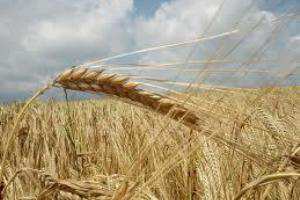Research: Phosphorus in wheat can be extracted

Researchers from Aarhus University are a step closer to improving the utilisation of plant phosphorus and have patented a method for increasing phytase activity in cereal.
To make matters worse, phosphorus is a very limited resource, which is estimated to last only for another 30-70 years. But plant seeds contain large amounts of phosphorus, and if we were able to increase the availability of this phosphorus to livestock, it would not only benefit the environment but also reduce our use of this scarce resource, advises associate professor Henrik Brinch-Pedersen from Aarhus University.feed to ensure they have a sufficiently high intake of this vital nutrient – but the non-digested surplus is excreted and ends up in the environment. – To make matters worse, phosphorus is a very limited resource, which is estimated to last only for another 30-70 years. But plant seeds contain large amounts of phosphorus, and if we were able to increase the availability of this phosphorus to livestock, it would not only benefit the environment but also reduce our use of this scarce resource, advises associate professor Henrik Brinch-Pedersen from Aarhus University.
Henrik Brinch-Pedersen and his colleagues have attempted to increase the content of phytase – an enzyme – in cereal for a more efficient use of the phosphorus in the feed. But what is the connection between phytase and phosphorus?
Phytase renders phosphorus available for digestion
Cereal forms an important part of animal feed. Cereal grains contain around 2-5 % phosphorus, but this phosphorus is unfortunately chemically tightly bonded with phytic acid, which means it is difficult for the animals to digest. Enter phytase, stage right.
Phytase is important for the utilisation of phosphorus and other minerals bound in plant seeds as it hydrolyses phytic acid and releases the phosphorus for assimilation. Animals and humans have no natural phytase activity in their digestive system and very few plant seeds contain sufficiently high phytase levels, so scientists and plant breeders have tried to remedy this. We have for a number of years been attempting to increase phytase activity in cereals. In wheat, barley, rye and triticale we see large variations within species, and also between species. Rye contains phytase both in the shoots and in the ripened grain. Rice and maize, on the other hand, contain virtually no phytase in the grain, only in the shoots, explains Henrik Brinch-Pedersen.
Historic split
It turns out that the difference is due to a split of cereals into two different cereal families way back in ancient history. By studying the genome of the most important cereal – wheat – the scientists found that wheat contains a gene that in addition to coding for phytase in the shoots also codes for the generation of phytase in the ripened grain. Rice and maize do not contain this gene. – Now we know why some cereal species contain phytase activity in the grain. We also know that we cannot by ordinary plant breeding alone achieve a high phytase activity in maize and rice, says Henrik Brinch-Pedersen. The scientists are now screening a number of triticeae species and have discovered and demonstrated genetically how to produce a wheat with a phytase content on level with rye. This wheat hybrid, which has been named HighPhy, has been patented and sold to an English company for propagation.
Phytic acid also bonds with other minerals in the digestive system, preventing them from being assimilated. This is a particular problem in developing countries where the diet is dependent on a single staple such as rice, maize or sorghum that contain virtually no phytase. This can lead to deficiencies in micro-nutrients such as iron and zinc, says Henrik Brinch-Pedesen.
Source: Aarhus University











